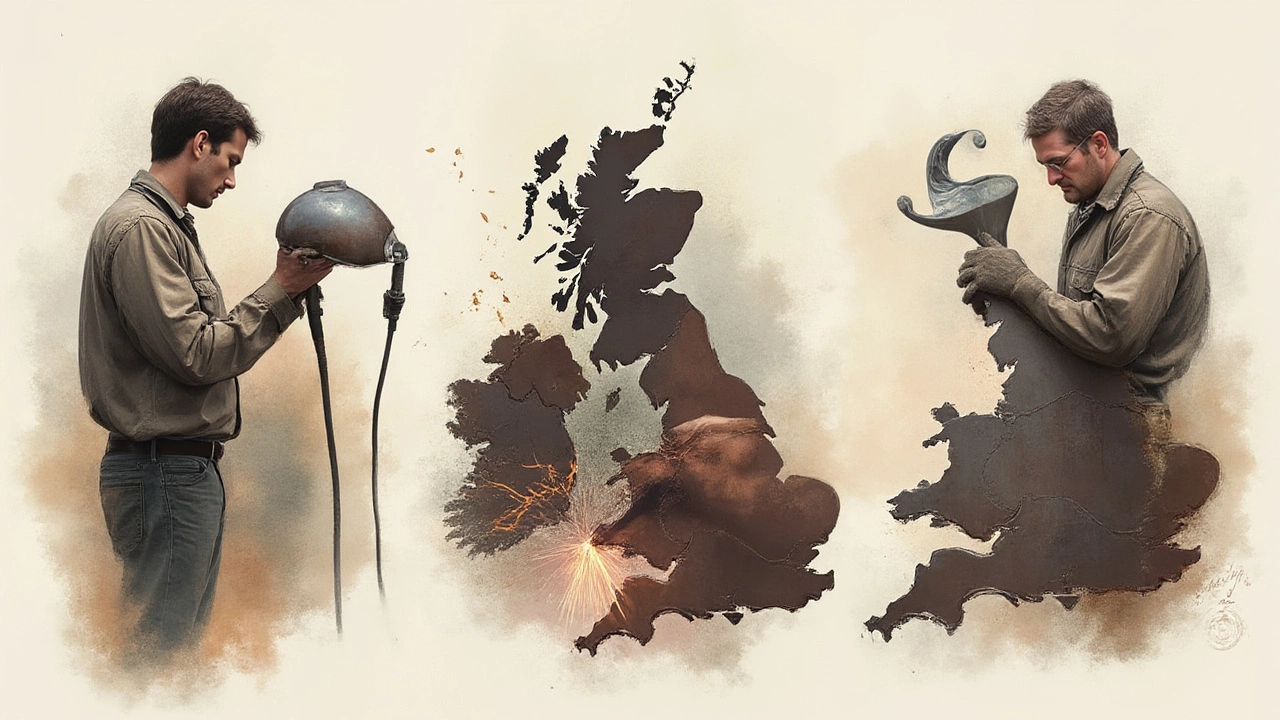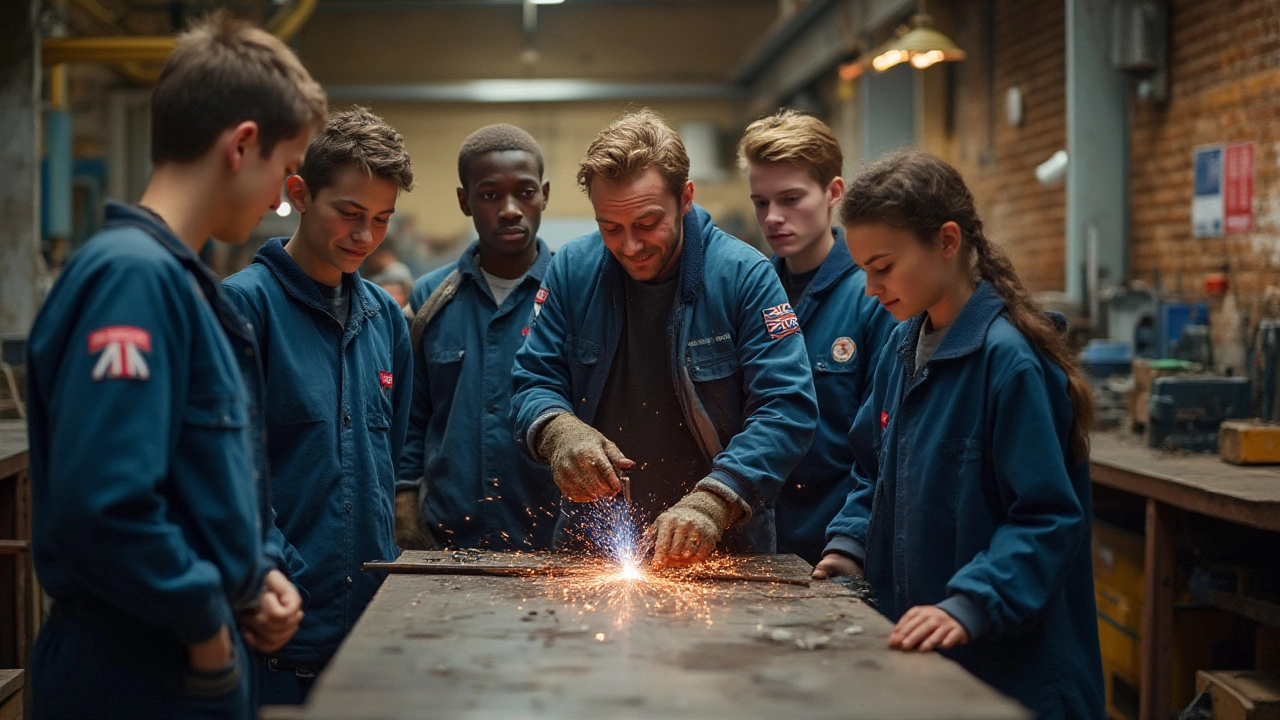Envision yourself staring at molten metal, a spark shower glittering off a fresh bead. In that moment, the idea of 'learning to weld' seems massive and mysterious. What nobody tells you upfront? You could be lighting your first arc much sooner than you might think.
Breaking Down the Welding Learning Curve
Many imagine welding as some distant skill—reserved for seasoned blue-collar warriors or ultra-skilled artists. But welding is surprisingly accessible, whether you want a hobby or a serious career. It’s true, welding shops and online forums are packed with wild tales. "I fixed a tractor in two days!" or "I still can’t pass an X-ray test after ten years!" Both are true. The learning curve varies because 'welding' isn’t just one thing.
Start with a fact: The absolute basics of welding—like striking an arc and running a basic bead—can be learned in a single afternoon. Give a determined person a welder, safety gear, and a little guidance, and in under four hours they’ll likely get two pieces of metal stuck together. But don’t mistake that for mastering the craft. To actually weld well is a different game. And each welding process (MIG, TIG, stick, flux-core) has different timelines.
If your goal is DIY around the house—think fixing a trailer or building a fire pit—you might reach "not embarrassing" results after a dozen hours of practice. But to weld professionally, land a job, or pass a structural welding test? You're looking at weeks or months. Most people can gain basic proficiency with MIG welding within about 20–40 hours of hands-on practice. TIG welding takes a touch more finesse—expect at least twice that.
Welding schools know this. That’s why most welding certificate programs run from 6 to 18 months. Community colleges and technical schools set up programs between 500 and 1,200 hours total. Yet, even then, employers don’t expect total pros—they want safe, reliable workers willing to keep learning. The American Welding Society (AWS) points out that strong entry-level welders are always in demand, and job listings often ask for certificates, not decades of experience.
Why is it hard to pin down one answer about "how long it takes to learn welding"? Different people start at different places. If you’ve got good hand-eye coordination from video games or other crafts, you’re already ahead. If you don’t mind the heat, noise, and awkward body positions, you’ll move faster. Learning from an experienced mentor (even YouTube) often trims the hours. It’s also about confidence. Many new welders struggle with self-doubt, and that slows things down.
Here’s a real kicker: The most skilled welders never stop learning. Procedures change. New machines show up. Jobs ask you to weld upside-down in a rainstorm or hit a pressure test you haven’t seen before. That’s part of the appeal. Welding is a skill made of hundreds of smaller techniques, all stacked up over time. It's not just about "gluing metal." It’s math, patience, and a weird dance between science and guts—all mixed into every pass you make.

Training Paths, Certification, and Real-World Progress
If you’re eyeing a welding career, you’ll need a roadmap. Most folks start with the basics in a classroom or shop, then progress to certifications. Here’s a quick breakdown of how the process goes for most:
- MIG welding (GMAW): Fastest to start. You can lay down an ugly, but functional, weld in a couple of hours. In a week of practice, your welds will start to hold.
- Stick welding (SMAW): Takes a bit longer to control the arc and keep a steady hand. Most reach passable skill in about 40–60 practice hours.
- TIG welding (GTAW): Most finesse required. It takes 80–200 hours to feel confident joining thin stainless or aluminum without blow-through or ugly results.
- Flux-cored welding (FCAW): Similar to MIG, but with flux in the wire; most people catch on in 20–40 hours.
These numbers aren’t invented—most welding schools and respected workforce studies back them up, including data from the U.S. Bureau of Labor Statistics. You can even check with your local trade school; they’ll often admit that motivated students can complete a beginner program in under two months, practicing a couple hours per day. Most employers in the U.S.—especially in manufacturing or repair—will seriously consider you for a job if you hold a basic AWS certification.
But here’s something many overlook: Certification tests vary depending on industry. Pipe welders, for example, might spend 6–12 months preparing for the 6G pipe welding certification, one of the toughest practical tests out there. By contrast, basic plate or sheet metal certification can take less than a month. The heavier the demands (pressure vessels, refinery work, military, etc.), the longer you’ll be "learning" even after your first job.
Don’t underestimate the physical side. Welding is tiring. Standing in one spot for hours, in hot gear, sometimes in brutal conditions, separates the dabblers from the serious. That’s why many programs blend classroom work (covering welding symbols, metallurgy, safety) with hours and hours of shop practice.
The gear itself matters—a lot. Using a junky welder with bad wire or warped tips will stall your progress. Skilled welders agree: Start with decent gear (even a $500 hobby MIG welder is miles better than cheap no-name units). Invest in a self-darkening helmet and comfortable gloves. The right setup cuts the learning curve way down because every session feels smoother and less frustrating.
Here’s some raw data on welding training and job expectations. The table below shows typical timelines for welding school programs, based on real-world averages from U.S. technical schools:
| Program Type | Typical Duration (Hours) | Proficiency Level |
|---|---|---|
| Introductory MIG Welding | 30–60 | Basic welds, hobby-level |
| Certificate (All Processes) | 500–800 | Job-ready, entry-level |
| Advanced Pipe Welding | 900–1200 | High skill, ready for critical work |
So, you can hit entry-level workforce readiness in as little as 2–6 months (with full-time schooling). For someone working a day job and taking night classes? You’re probably looking at closer to a year before you’d feel comfortable taking on side gigs or job-site work.
The learning doesn’t end with school. Most welders get their first jobs still learning every day. Bosses often expect new hires to ask questions, fix mistakes, and keep practicing. You’re always working on efficiency—how fast, how clean, how consistent can you be? That’s why so many welders get excited about welding. There’s always a new trick to learn, a tougher weld test, a weird project you haven’t seen before.
Here’s a quick list of things that speed up learning for most people:
- Practice often, even if only 20 minutes a day.
- Watch video tutorials—YouTube is packed with pros demonstrating technique.
- Ask questions from older welders. Most are friendly if you’re respectful and curious.
- Clean metal thoroughly—rust and paint mess up everything.
- Start with thicker material. Thin stuff burns through and frustrates beginners.
- Invest in comfort: decent gloves, helmet, and clothing.
- Get feedback: take pictures, ask for critique, try to imitate clean welds you see online.
No surprise, those who push themselves (or admit when they're struggling) climb the skill ladder much faster than people who keep repeating the same mistakes. Willpower matters almost as much as technique.

Practical Tips, Myths, and the Fastest Ways to Get Good
Here’s a myth that trips up a lot of beginners: "You have to go through years of apprenticeship before you know what you’re doing." Not true. Plenty of welders land excellent jobs straight from a 6-month training program, especially if they show up on time, pay attention, and practice clean habits.
But here’s the flip side illusion: "You can learn everything on your own in your backyard." That’s partly true if you want to tinker, but no amount of online rabbit holes beats legit practice in a shop, blasting through scrap metal and adjusting as you go. Real feedback (from instructors or experienced welders) makes every hour count triple. Don’t weld in isolation—join a local class or get a trustworthy buddy to point out what’s good or bad. Your learning curve flattens out if you waste time repeating mistakes with no corrections.
Another big myth: "Welding's all about strength and speed." There’s no single 'right' style—some skilled welders are fast, others are ultra-careful, layering tiny perfect beads. Some companies pay top dollar for slow, careful welds (think aerospace work), while fabrication shops want efficient workers cranking out dozens of parts daily.
Wondering how old you need to be? In the U.S., most states allow people to start formal welding classes at 16. Some community colleges accept younger kids in summer programs. Physically, you just need the ability to hold a torch and focus on safety. There’s even a category of welders over 60—retirees who picked up the skill for farm work or sculpture. Age is no barrier.
Here’s an angle many ignore: reading blueprints, understanding codes and metallurgy, and filling out paperwork are all crucial. Every welding program will force you to hit the books for at least part of your training. Learning the symbols and rules might seem boring, but skip this and you’ll stall out when jobs get technical. On the flip side, people who geek out about the 'sciencey' side of welding often become the top troubleshooters on job sites.
The best advice? Don’t rush. Focus on consistency, not just sticking metal together. Even if your first hundred welds look terrible, you’re way ahead of someone who never picked up a stinger. Embrace every mistake—that’s feedback gold. Most legendary welders can point to the moment when they "burned through" their first 10,000 rods and finally understood what ‘good technique’ feels like.
Here are a few habits that’ll help you reach welding confidence faster:
- Keep a notebook of what settings work for which projects. After months, it’ll be your cheat-code.
- Switch positions. Standing, flat, overhead, vertical—every new job will demand it.
- Challenge yourself with harder materials—try stainless or aluminum once you’re consistent on steel.
- Don’t neglect safety. Burns, flash, and flying slag are real—not just horror stories for rookies.
- Have a goal, like building a small trailer or repairing something useful. Projects give purpose to practice.
Welding’s a field that rewards the curious, the patient, and the obsessed. If you stick with it—practicing, asking for feedback, upgrading your skills whenever you hit a wall—you’ll be shocked by how quickly you go from clueless to competent. It’s not about magic talent. It’s all about time on the torch and learning from every melted joint.
So how long does it take to learn welding? You can get the basics in a few hours, real confidence in a dozen days, and launch a serious career in under a year—if you stick with it and keep learning. The best part: Every hour spent welding brings you closer not just to a new skill, but to a community that’s always willing to help you spark up and keep improving.





Write a comment